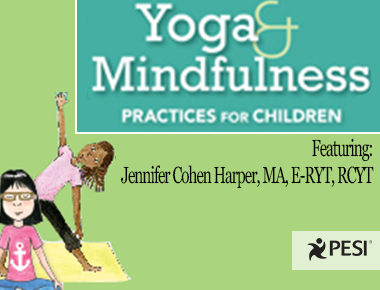Blogs and Free Resources
Here at ∫⁄¡œÕ¯, our mission is to provide professionals like you with FREE practical and valuable tools, strategies,
and resources to assist with the great work you do. Find expert tips, helpful worksheets, demonstration videos, CE, news,
and more here. Happy learning!

Exploring the Roots of Passive-Aggression
We've all met someone who acts passive-aggressively. We know what it looks like—and we're often the ones doing it—but how many of us know why we act passive-aggressively? Where does passive-aggressiveness come from? What are the roots of passive-aggression?

Mindful Breathing with Dr. Daniel J. Siegel
In this short clip, world-renowned neuropsychiatrist and bestselling author Dr. Daniel J. Siegel shares his quick breathing awareness exercise to calm the hectic, stressful and worrisome mindset and create a more pleasant, cooperative environment.

Yoga & Mindfulness for Children
Practices for Better Mind-Body Balance
Yoga and mindfulness practices can be powerful tools to help children build strength, manage their emotions, become more flexible (physically and mentally!), and gain mind-body balance. With our young clients, students and our own children headed back to school, you may be in need of some fun and simple strategies to deal with the stress and anxiety that can accompany this transition. Here are three practices you can try today!

NEW Classroom Activities
Dr. Lynne Kenney recently released 2 practical programs introducing research-based activities from her most recent works Bloom Your Room and 70 Play Activities To Enhance Thinking, Self-Regulation, Learning and Behavior. Discover simple activities to enhance competence, confidence, communication and collaboration. Get ahead of misbehavior by teaching with the brain in mind!

Mindfulness Meets Internal Family Systems: Richard Schwartz on Helping Clients Move from Acceptance to Transformation
A perennial quandary in psychotherapy, as well as spirituality, is whether the goal is to help people come to accept the inevitable pain of the human condition with more equanimity or to actually transform and heal the pain, shame, or terror, so that it’s no longer a problem. Are we seeking acceptance or transformation, passive observation or engaged action, a stronger connection to the here-and-now or an understanding of the past?

How You’re Fueling Your Own Anxiety And How to Fix It
Have you noticed that when people tell you “relax” or “calm down” you only feel more agitated and may even feel like flipping them off? Yet we usually give ourselves the same advice as we try to quiet the thoughts in our head. How do we address our anxiety without making it worse?

Improve Insight and Unlock Change Using Metaphors from Daily Life
Metaphors facilitate learning, create a memorable visual, and are usually well received by clients as they communicate a personally relatable point in a non-confrontational manner.

How To: Progressive Muscle Relaxation for Self-Regulation with Children & Adolescents
Progressive Muscle Relaxation Worksheet Included
Progressive Muscle Relaxation (PMR) is a great technique to use with children struggling with self-regulation because it allows for personalization of the scripted passages we use to guide the exercise. Read more to download your FREE PMR Worksheet...

The Floating Technique: For anxiety and panic disorder
The floating technique includes four steps and can be used with both adults and children struggling with anxiety and panic disorder. Learn more in this short video with Paul Foxman, Ph.D.

4 Easy Steps to Calm a Stressed Child
If you work with children who struggle with self-regulation, mind-body strategies that use yoga, meditation, mindfulness, and guided imagery can be especially effective, and often fun, for the child to gain their composure. Use this activity, called The Steps, at home, in the grocery store, or wherever life takes you.

